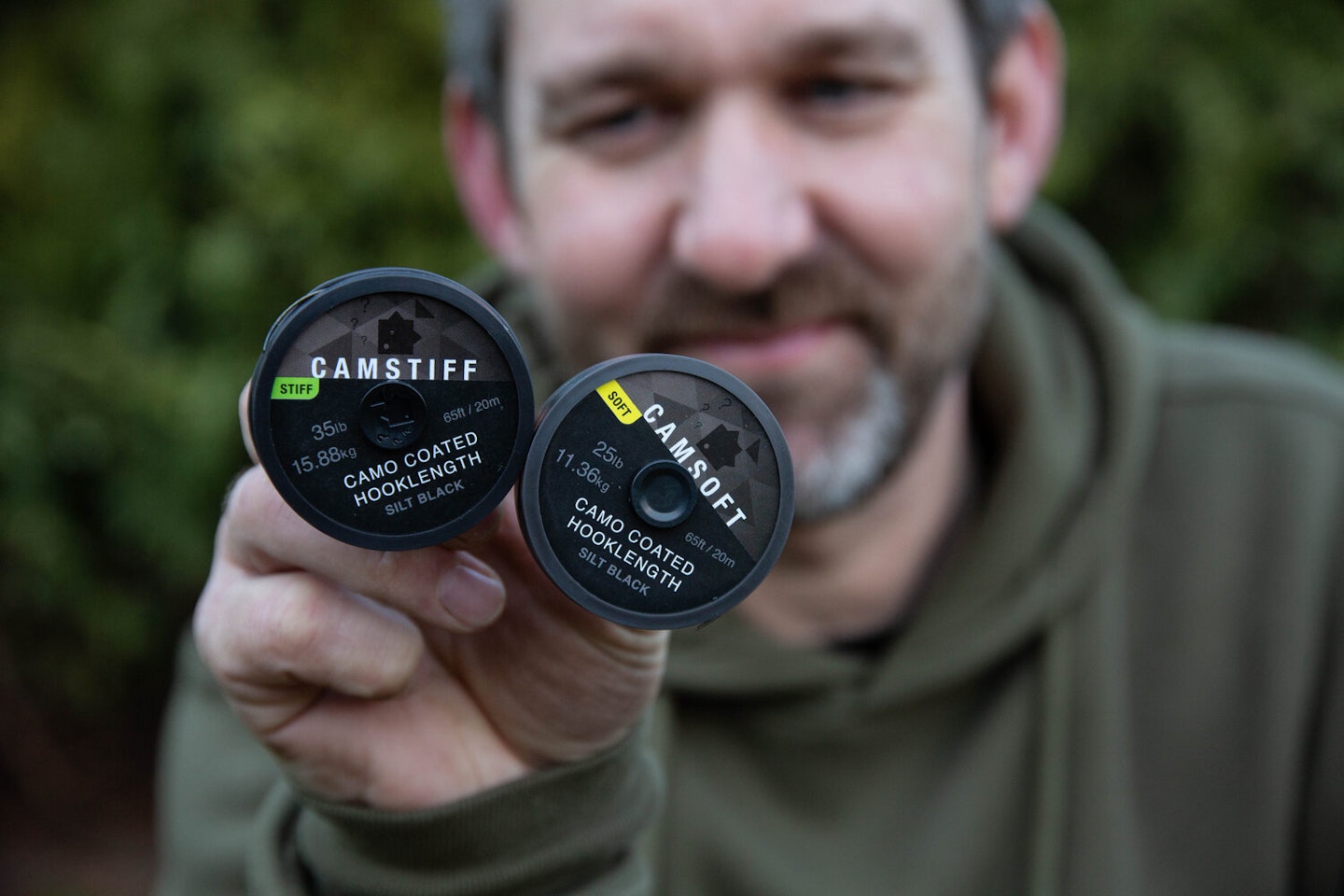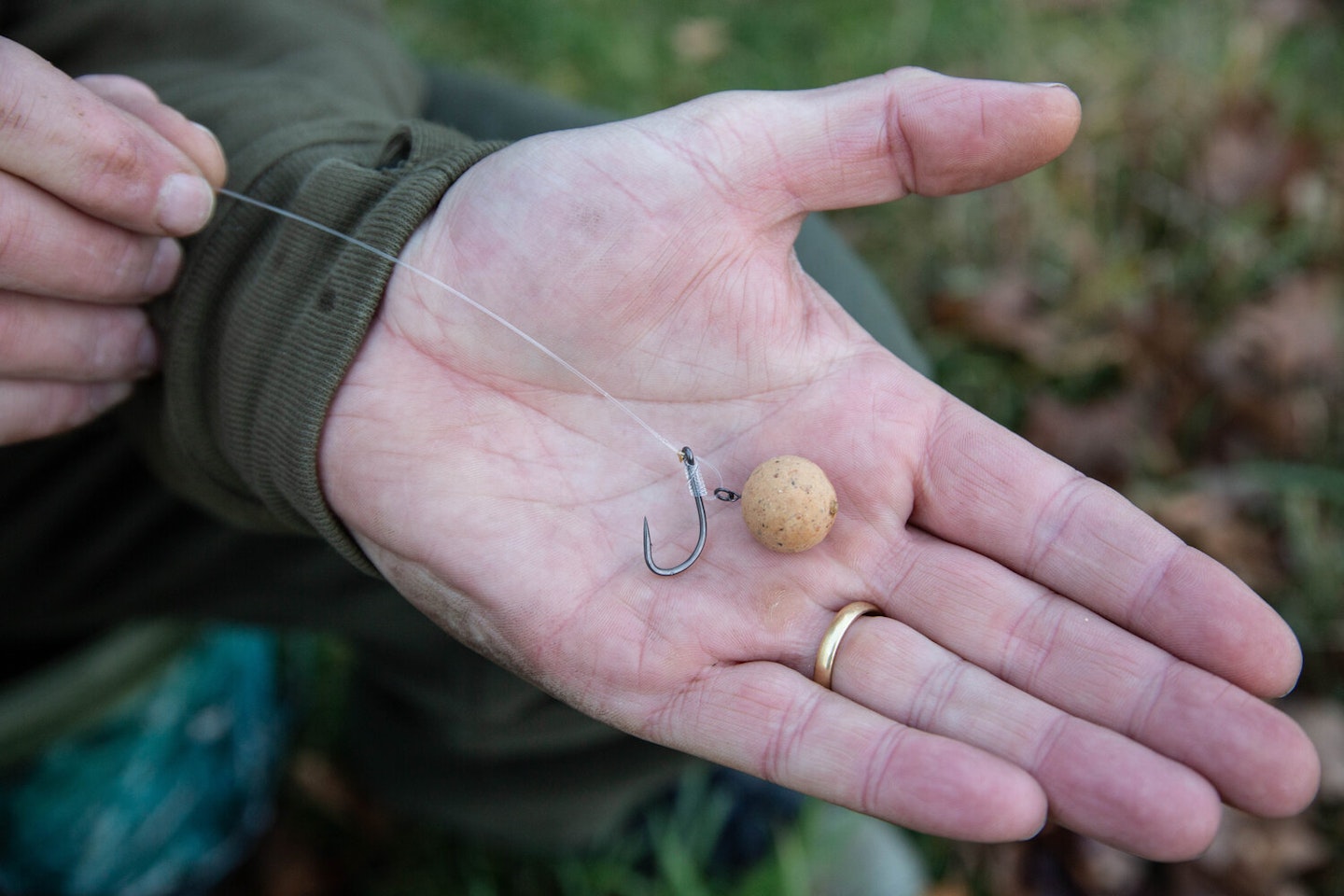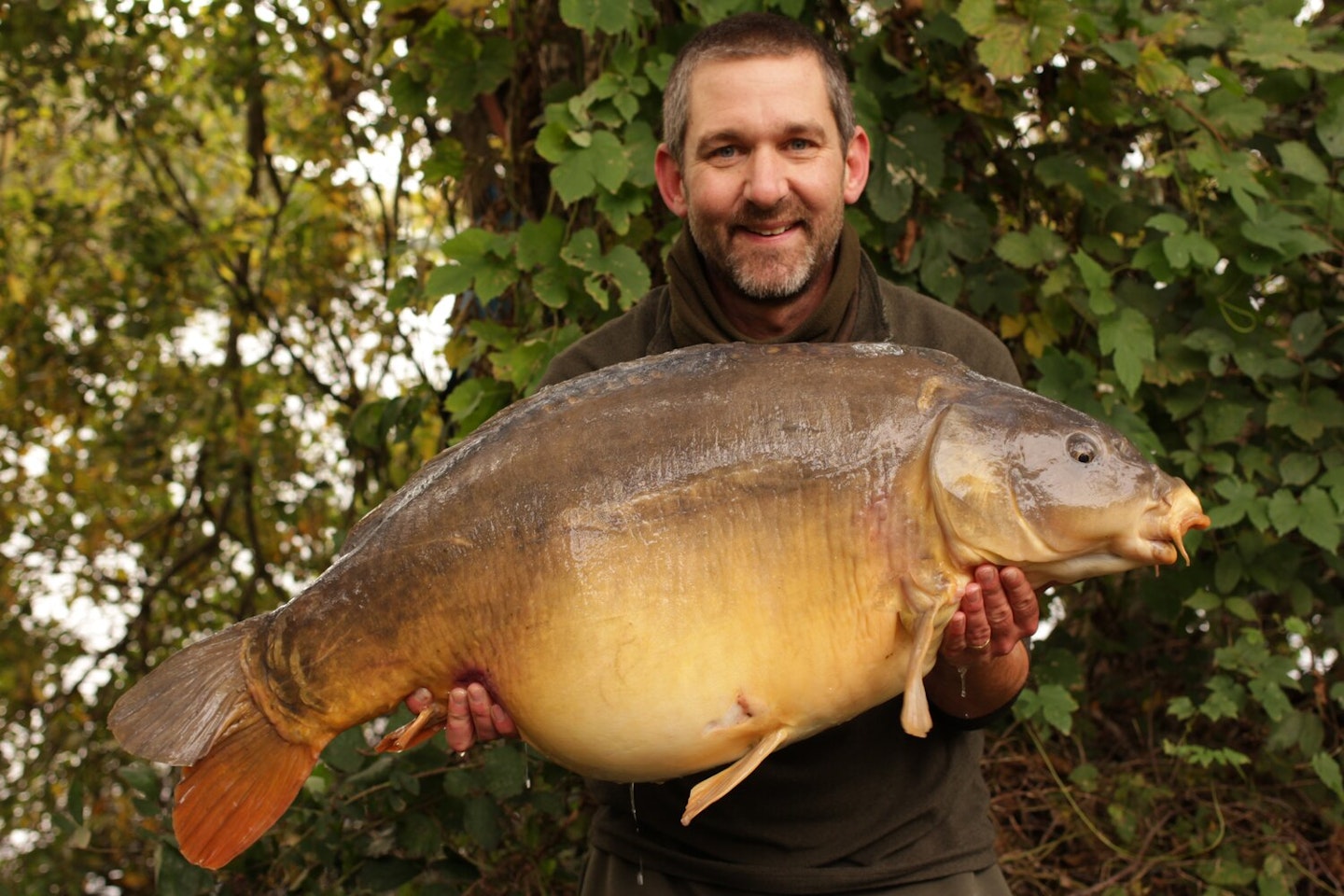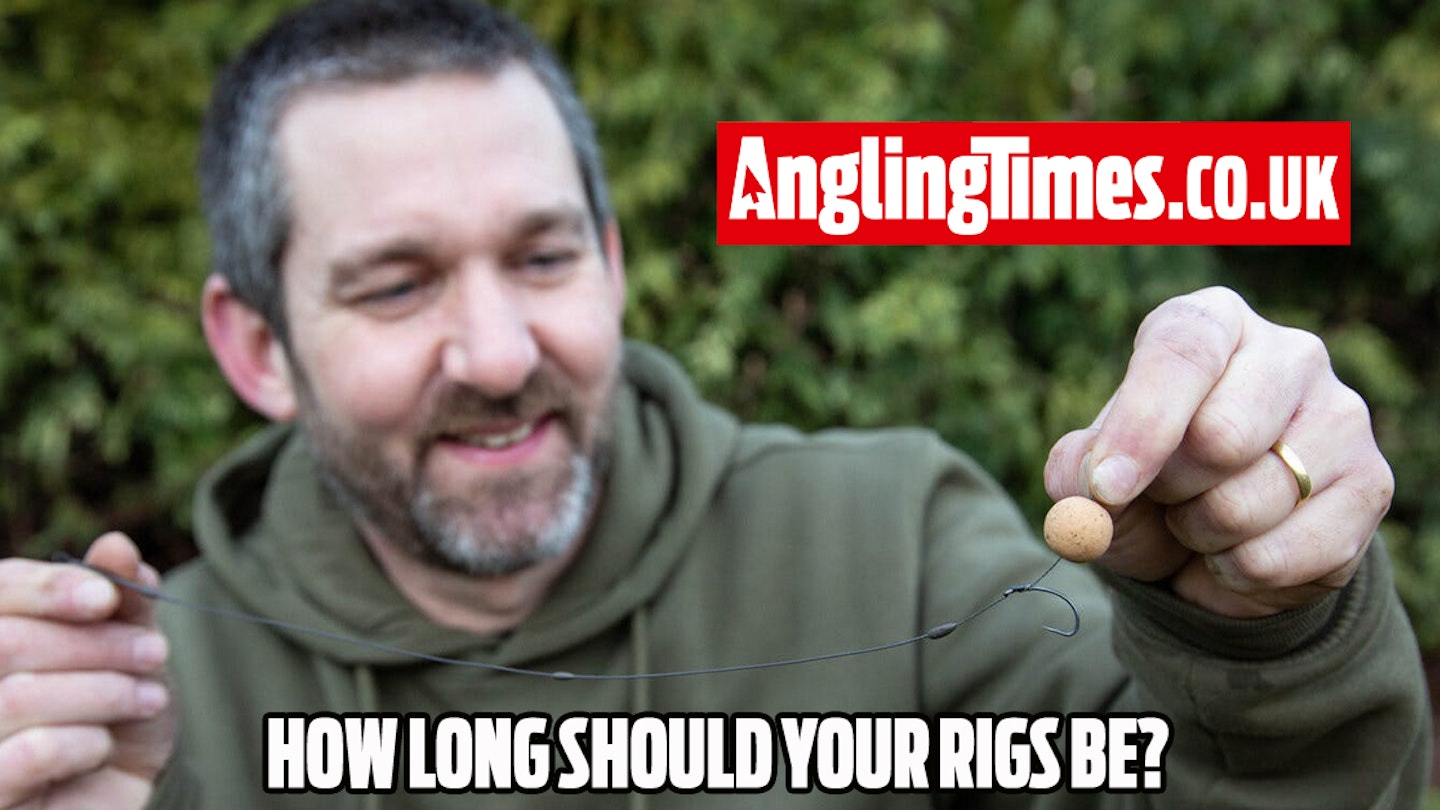When constructing a rig for carp fishing, the first step to deciding the hooklink length is to consider the nature of the lakebed and your lead arrangement.
It’s easy to preach how anglers should tailor lead arrangements to different venues and even different swims, but the reality is that we all have a preference, and it’s probably easier to adjust the length of the hooklink to compensate.
GET ALL THE KIT YOU NEED TO GO CARP FISHING BY CHECKING OUR OUR BUYER'S GUIDES TO RODS, REELS, BIVVIES, ALARMS AND MORE.

ALL IN THE LANDING
If the lake has a thick layer of soft silt then a relatively short hooklink of, say, less than 10ins, mounted on to a lead clip set up could easily become buried in the sediment.
Many fish have been caught using this method, but it can be hit-and-miss as success relies upon the fish digging the bait out. This issue is exacerbated by using big leads – the weight of which will settle down through silt over a period of time.
The single benefit of allowing your rig to be pulled down into the silt is that it’s almost impossible for feeding fish to inspect a hookbait.
LEARN HOW TO TIE THE ONLY CARP RIGS YOU WILL EVER NEED IN THIS TACTICS ARTICLE.
How can they, when they’re ‘gills deep’, sucking in mouthfuls of filth? Consequently, it can be a valid method when fishing for big fish on pressured venues.
However, most of the time having your hookbait buried would inevitably increase the time it will take for a fish to find it, so we tend to actively search out clean spots to fish on.
If you’re using this classic carp fishing approach, then you’ll be able to shorten hooklinks to optimise the reaction speed of the rig.
You need to be certain that the lakebed is suitable, though. That investigatory process takes time and will inevitably create a degree of disturbance.
Therefore, on short sessions, choosing a more versatile longer hooklink or, dare I suggest, a chod rig combined with the smallest possible lead, will nick you bites that ‘foaming’ the swim upon arrival would invariably fail to get.

HOW LONG IS LONG?
As a rule of thumb, a long supple skinned or mono hooklink on a lead clip will present adequately under most circumstances, especially if you combine this with a small stringer or PVA bag.
These slow the descent of the rig through the water column, significantly reducing the depth at which the terminal tackle will embed into the bottom.
By long, we’re realistically talking an absolute minimum of 12ins (that’s 20cm, kids!) and I would suggest 14ins as a good starting point.
Adding an anti-tangle sleeve will improve the presentation further, ejecting the hooklink away from the lead at all times.

WHEN TO GO SHORT
There are some situations when an ultra-short hooklink of 4ins or less will be devastating – for example, when dropping rigs with big leads on to spots in the edge or inside solid PVA bags.
However, if you’re casting blind, feeling the lead down and setting traps in zones of carp activity, I’d generally suggest erring on the side of caution and thinking primarily about presentation, rather than worrying about going as short as possible.
In my experience, an educated pub chuck with a versatile rig will invariably win you more opportunist bites.

ADJUSTING FOR FISH SIZE
There’s also the question of fish sizes and their effect on rig mechanics. There’s a strong logical argument for the idea that it’s advantageous to use slightly longer rigs if you’re fishing a big fish water.
On balance, however, I think that a well-presented rig is the key factor. A more realistic way to create an effective hooking mechanism for the gaping big mouth on a leviathan of a carp would be to increase the size of the hook or slightly lengthen the hair to create more separation – but that is a big topic in itself!
FIND THE PERFECT CARP WATER FOR YOUR NEXT SESSION BY CHECKING OUT OUR WHERE TO FISH GUIDES.
FEEDING AND BAITING
Another factor that has a large bearing on hooklink length is feeding behaviour.
On some of the more mature gravel pits or estate lakes I’ve fished, the fish regularly feed on natural food sources by rolling on a spot and then eating the suspended food items they have displaced – classic bloodworm feeding.
In this scenario, a small balanced hookbait on a long hooklink can be particularly effective.
One final note relating to feeding behaviour is the link between baiting patterns and hooklink length. The basic rule of thumb is that if you’re fishing over a bed of particles, chops or small pellets, the fish will naturally move their heads slowly while grazing across an even spread of bait.
Under these circumstances, a short rig will react more aggressively than a longer hooklink, and the most important consideration is the accuracy of hookbait placement.
Conversely, a spread of bait (normally boilies) encourages the carp to snuffle about more actively, moving from one freebie to the next, naturally making the option of a longer hooklink more viable.

This page is a free example of the amazing content Angling Times Members get every single week. Becoming an Angling Times Member gives you access to award-winning magazine content, member rewards, our back issue archives, bonus content and more! Join our fishing community and find out more today!
